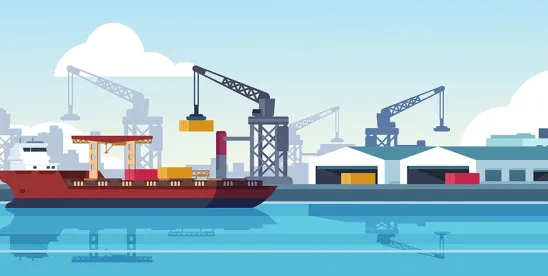On April 30, Sens. Mark Kelly, D-Ariz., and Todd Young, R-Ind., and Reps. Trent Kelly, R-Miss., and John Garamendi, D-Calif., reintroduced the Shipbuilding and Harbor Infrastructure for Prosperity and Security (SHIPS) for America Act (the Act). Other cosponsors in the Senate include Sen. Lisa Murkowski, R-Alaska, and Sen. John Fetterman, D-Pa. In the Senate, the tax provisions of the Act will be introduced in a separate Building SHIPS in America Act. The press release announcing the reintroduction of the Act includes links to a section-by-section summary of the Act and to the full text of the Act itself.
As in the version that was introduced in the previous session of Congress, the Act establishes requirements and provides incentives designed to revitalize the United States as a maritime nation, with revisions that, among other things, reflect the findings of the US Trade Representative regarding China’s shipbuilding dominance and President Donald Trump’s Executive Order “Restoring America’s Maritime Dominance.”
A key provision of the original version that the Act retains is the creation of a White House-level position of Maritime Security Advisor, who in turn will lead an interagency Maritime Security Board tasked with making whole-of-government decisions to implement a national maritime strategy.
The Act continues to set an ambitious goal of expanding the US-flag international fleet by 250 ships in 10 years in order to facilitate the development of a fleet of commercially operated, US-flag, American-crewed, and domestically built merchant vessels that can operate competitively in international commerce.
In line with the President’s Executive Order, the Act retains provisions to establish a Maritime Security Trust Fund to reinvest duties and fees paid by the maritime industry into maritime security programs and infrastructure supporting maritime commerce.
Running 341 pages in its official printed format, the Act brings forward many other specific legislative proposals that were in its original version, including measures for regulatory reform, increased cargo preference requirements, financial incentives to expand shipyard capacity, support for innovations in maritime technology, and investments in maritime workforce education and career development. These proposals will no doubt receive detailed analysis, discussion, and debate in the days ahead. In order for some elements of the Act to be enacted more quickly, they might be separated out and incorporated into other pieces of legislation, such as the National Defense Authorization Act that is typically passed each year.
As before, the Act enjoys not only bipartisan support in Congress but also strong support from stakeholders throughout the maritime industry, with initial endorsements from nearly 70 vessel operators, labor unions, port authorities, and industry groups. With the President’s pledge to support US shipbuilding in his joint address to Congress in March, the subsequent creation of the Maritime Directorate in the White House, the President’s issuance in April of an Executive Order to restore America’s maritime dominance, and now the bipartisan and bicameral reintroduction in Congress of the SHIPS for America Act, the maritime industry is enjoying more attention in Washington than it has received at any time in more than half a century.






 />i
/>i
